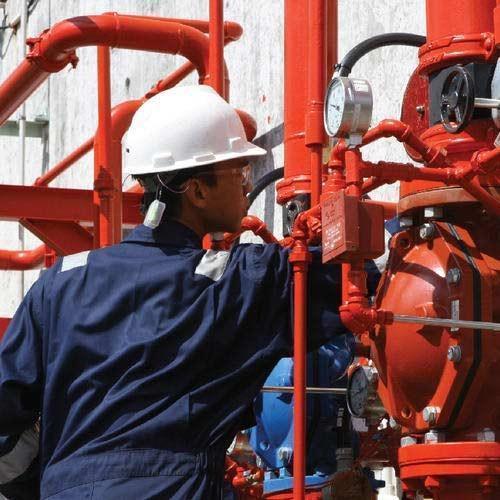A Lifeline in the Heat: Comprehending Flame Protection Services
Fire safety is an essential aspect of safeguarding not only our homes but also our jobs and neighborhoods. In a world where sudden disasters can arise at any moment, knowing the many fire safety solutions available is essential. These services include a wide range of practices, from developing comprehensive fire exit plans to confirming your smoke alarms are functioning properly. With the increasing frequency of wildfires and urban fires similarly, having a solid grasp of fire prevention and response measures can be the factor between security and catastrophe.
In this article, we will investigate multiple dimensions of fire safety, including key tips for protecting your home, the necessity of regular fire drills, and usual fire hazards to avoid. We will also discuss particular factors for diverse contexts, such as schools, healthcare facilities, and skyscrapers. By acquiring knowledge about fire risk assessments, fire safety regulations, and the newest developments in fire protection technology, you can prepare yourself more effectively and your loved ones to face the truths of fire emergencies.
Important Fire Protection Guidelines
Fire safety is important for anyone, whether at residence or in the workplace. One of the key steps you can take is to set up smoke alarms in important spots, such as bedrooms, corridors, and cooking areas. Regularly testing these alarms makes sure they are operational and can be lifesaving in case of an accident. Additionally, it is important to switch out the batteries at least annually and replace the entire unit every decade to maintain best functionality.
Creating a fire escape plan is another important aspect of fire safety. This plan should detail clear exit routes for your loved ones or workers and assign a safe gathering spot outside the building. Practice this plan through regular fire drills, which are important for ensuring everyone knows what to do in case of a fire. These drills help reinforce the importance of quick and safe evacuations, making it more likely that individuals will act suitably during a true emergency.
Lastly, being aware of frequent fire hazards in your space can significantly reduce fire risks. In residences, items like overloaded electrical outlets, flammable items near heat sources, and unattended cooking equipment are frequent issues. In workplaces, ensuring that combustible goods are properly handled and that all fire safety equipment is in good working order can prevent catastrophes. By being prepared about these hazards, you can drastically improve safety for yourself.

Creating a Fire Escape Plan
A thorough fire escape plan is important for all household and workplace. The initial step is to locate all possible exits in your residence or business, including entrances and openings. Make sure that everyone can safely access these exits, and that they are not obstructed by items or debris. Go over the routes to safety with everyone, and ensure that they know which exits to use depending on the location of the fire. A visual diagram can be particularly helpful in illustrating these escape routes.
Next, choose a safe meeting spot externally where all individuals can meet after escaping the building. This makes sure that all individuals is safe and can help emergency responders know if anyone is still inside. Engage all family members or employees in this plan, so they feel at ease about what to perform in an urgent situation. Regular discussions and practice sessions will help solidify the plan and ensure everyone remembers their roles during a fire emergency.
In conclusion, it's crucial to review and rehearse the fire escape plan at least two or more times a year. Conducting fire drills not only familiarizes everyone with the escape routes but also helps spot any potential issues with the plan. After each drill, review what went right and what could be enhanced. Remember to update the plan if there are any adjustments in the layout of your house or workplace, or if new people join your household or staff. Consistent practice and updates will ensure that your fire escape plan stays effective and everyone is prepared to remain secure in case of a fire.
The Importance of Fire Alarms and Water-Based Fire Suppression Systems
Fire alarms and sprinkler systems are essential components of any comprehensive fire protection strategy. They serve as the first line of defense in detecting and controlling fires before they can escalate into catastrophic events. Fire alarms provide early warning, giving occupants the time they need to evacuate and alert emergency services. Regular testing and maintenance of these systems are necessary to ensure they function properly when needed most. A defective alarm can have severe consequences, underscoring the importance of keeping these devices in good condition.
Sprinkler systems play a significant role in controlling fires and reducing damage to property and lives. When activated, have a peek at this web-site release water to extinguish flames, often preventing the fire from spreading. Research have shown that buildings that have water-based fire suppression systems have significantly diminished fire death rates and property loss compared to those without. Therefore, businesses and homeowners alike should consider installing these systems as a preventive action to enhance safety and reduce risks during a fire incident.
In addition to their life-saving capabilities, fire alarms and sprinklers are often required by local fire safety codes. Compliance not only protects occupants but also ensures that businesses avoid fines and penalties associated with negligence. Investing in effective fire alarm and sprinkler systems is not just a matter of safety; it is a prudent financial decision that can reduce insurance premiums and protect against expensive damages in the event of a fire.